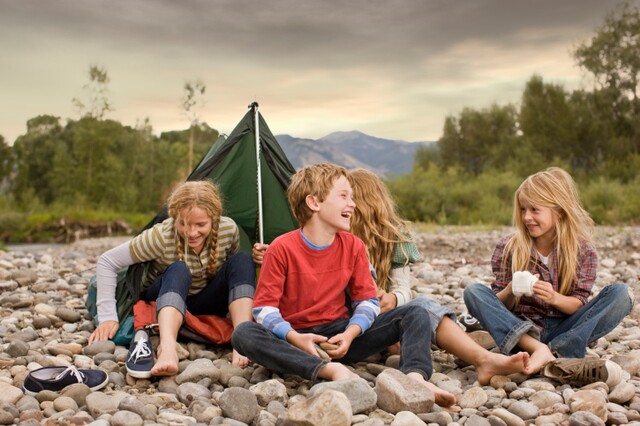
Before or after you play: Talk with your kids
Talk to your kids about the types of emergencies or personal safety situations they may encounter and what they can do to be safe. Create scenarios or role plays to act out and come up with solutions together. Here are some survival skills that you could talk to them about:
Emergency Kits (how and when to use each item appropriately)
What to do if they are lost
What to do if a stranger approaches them
Outdoor Survival Skills (plant and animal track identification, building a shelter or fire, using a compass)
Talking with them about these issues will help them to understand the importance of the games and the reasons why they are playing them. After playing the games, you can even ask them what they learned about emergency preparedness or survival.
Rules and Regulations for Parents and Kids
Parents:
Don’t try to cover everything in one day!
Teach one skill at a time and have a game to go along with each
Make sure that games are age appropriate
Make sure games are supervised by an adult
Kids:
Show respect to the environment
Be kind to the gear that you use
Stay within the playing area
Let the Games Begin!
Bases (ages 6-12+)
This is like extreme hide and seek that teaches you how to use the environment as a natural hiding place (good for hiding from intruders, hiding for safety outdoors).
Number of People: 6-8 people (the more people, the better!)
How to play: Select one person to be the seeker (this could be the adult supervising). Seeker picks out 6 “bases” that all the hiders must touch/reach during the game within the playing area. The seeker stands at the last base. The goal for the hiders is to get to all the bases without being caught by the seeker.
The seeker will count to a certain number each round, as hiders run to hide behind each base. Every round the number of counts will be different. As the seeker counts they can count very fast or very slow using the “dot system.” For example:
The seeker will announce the counts before they begin counting by saying “10 Slow” or “3 fast”
If the seeker wants to count slowly they will count saying—“one, dot, two, dot, three, dot”
If they want to count fast they will say “one, dot-dot, two, dot-dot, etc.”
If the seeker sees anyone poking out from their hiding place after they are done counting, the seeker will call out their name, signifying that that person is out. The person who gets to the last base first without being seen is the winner.
Other Survival Skills Games to Play:
Naturalist Scattergories-http://www.twineagles.org/fun-outdoor-games.html(ages 6-12+)
One player selects a category (example: types of trees), players sit in a circle and have ten seconds to say a type of tree. Answers can only be said once, the last player remaining in the circle wins. Best with 6 players, but can be played with 2. Can also be played using emergency items (name items in an emergency kit, items to bring on a camping trip, types of shelters, etc.)
Shelter Skirmish-http://cheaperthandirt.com/blog/?p=45983 (ages 8-12+)
After reviewing types of shelters and talking about how to make one, have players compete to make a lean-to shelter with items from the yard. After they work for a while, give them items to help such as a few strips of duct tape, some rope, or a poncho. See who can make the best shelter from a couple of items.
This article is sponsored by Emergency Essentials. For more information about preparing for disasters, visit emergencyessentials.com.
